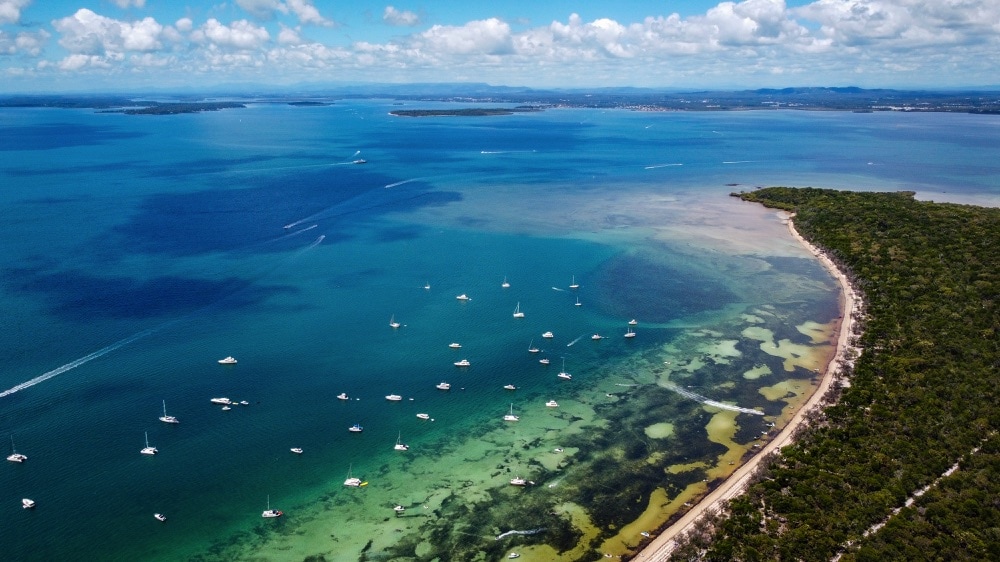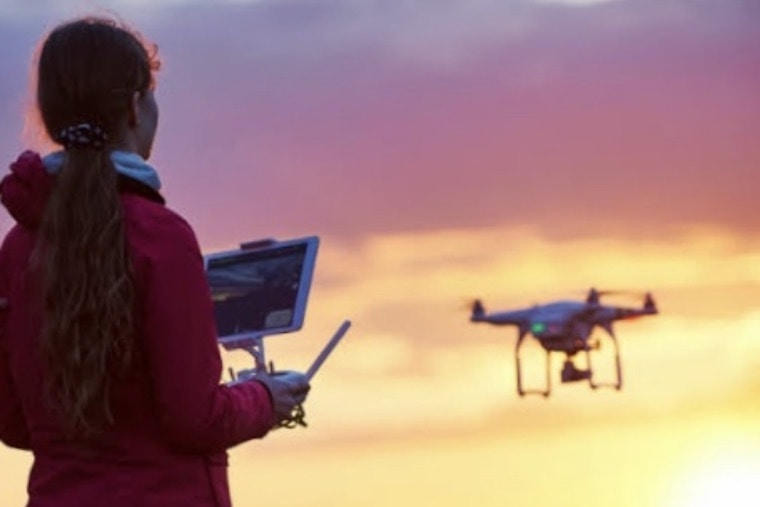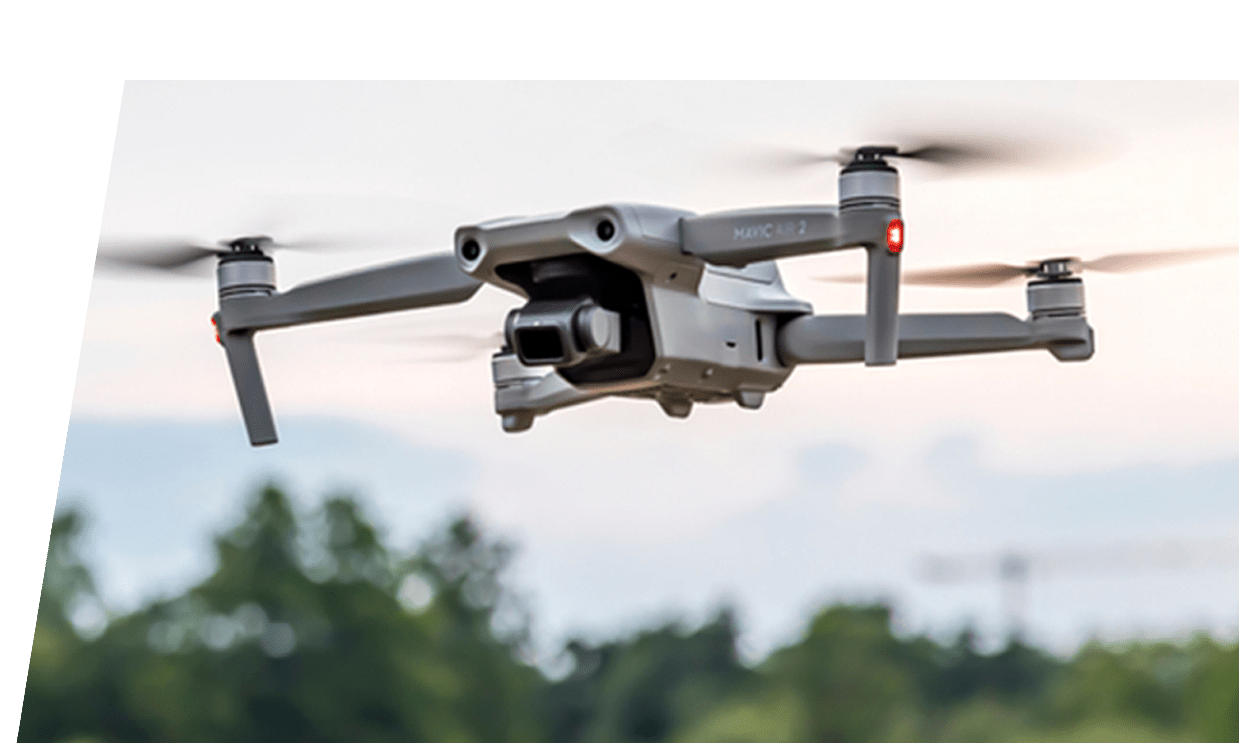[startwrap class=”row”]
[divup class=”col-lg-7″]
Capturing aerial footage with drones is becoming increasingly popular, especially in the creative industries.
It’s a new opportunity to capture perspectives and views we’ve never seen before.
Good drone footage can add context to stories and narratives, demonstrate growth and significance, and add a new, cinematic element to your project.
Capturing good drone footage isn’t as simple as having all the best gear though. We’ve put together some tips and techniques to get amazing aerial footage below.
The flying technique
Having the best drone, camera, and configurations set up will be pointless if your flying technique is off. To capture good drone footage, it’s essential you have the flying techniques down pat.
Fly slowly & avoid jerking
Rapid, jerky motions will make for jerky and blurry footage. Fly slowly and make tiny, soft movements to navigate your drone around.
It sounds simple, but for new drone pilots perfecting slow and smooth motions can be really tricky.
Practice flying your drone as slowly as you can and tilt your gimbal slowly and consistently as you fly.
You can also adjust your gimbal and flight control settings in your app for most drones on the market. Have a look in the settings tab of your drones flight app.
Learn to pan
There are quite a few different panning techniques. Start out simple by practicing the most straightforward techniques.
Pick an object. It could be a person, sign, building, or even a mountain. Then practice panning around the object and watch how different techniques can achieve different effects.
Navigate your drone from left to right and back again, while keeping the camera level — so it travels in a straight line.
Next, try a 360 degree pan, or an orbit. Again, ensure you’re keeping your drone and camera level and at the same height. Then, travel around the object in a 360 degree formation.

Practice flying in circles and squares
One of the most effective ways to learn how to fly your drone and capture amazing footage is to practice.
Practicing flying in circles and squares is a good way to get the hang of the flying technique.
Fly your drone around in square and circle formations and practice your pitching and rolling techniques.
To get the most out of this exercise, follow the shape in one direction, then back again in the other direction.
Plan for the weather
It’s VERY important to plan for the weather on your shooting day. Obviously, rain isn’t going to be very good to fly your drone in, but you should even be considering the wind.
Wind can make it really difficult to gain adequate control over your drone and capture quality footage.
Fly closer to large, natural objects
Once you’ve got a grip on all the different flying techniques and feel confident in your control, try creating more interesting shots.
Flying closer to beautiful, natural objects like mountains, cliffs, and trees can add amazing depth to your footage.
While keeping your gimbal level, slowly fly in closer to the object and then back out again.
On the ground technique
Once you’ve nailed the flying techniques, the next step to amazing drone footage is your technique on the ground.

Plan for the lighting
A lot of the quality of your drone footage will come down to the location, your flying technique and control, and the equipment you use.
Just like typical photography though, lighting is your best friend and your secret power.
Scope out the location you’re planning to shoot in and work out the best time of day for the lighting.
Make use of the sun
Like we said, the lighting can make or break your footage. So, make use of the sun.
Different techniques with sunlight can create different feelings and effects in your footage.
Having the focal object eclipse the sun can create an amazing, illuminating illusion.
Allowing sunlight to stream into your shot can create a cinematic effect in your footage.
Shooting at sunrise or sunset can also create amazing footage. The light is softer at these times and becomes more diffused — it’s like a natural filter for your footage.
Use the grid for composition
Composing the perfect shot can be tricky.
When you’re shooting footage with a drone, you won’t have pixels to spare in post production.
So, it’s important that you’re limiting any need to crop the video.
It’s so essential you’ve lined the shot up perfectly the first time. Use the grid overlay to get your video’s composition just right.
Use a low shutter speed
The faster your shutter speed, the bigger the opportunity for the light in your footage to warp and create that strobing effect.
It’s all about finding the balance in the trade off between sharp footage and that strobing effect. A quicker shutter speed will create a much sharper and crisper image in your video.
But it will also let more light into the frame, creating that strobing.
Video producers typically recommend keeping your shutter speed from 100th to 250th of a second.
If you can’t lower the shutter speed, use a motion blur in post production
If you’ve forgotten to lower your shutter speed or need to use a quicker shutter speed to get the perfect shot, then post production is your friend.
Use a motion blur tool in your post production editing to smooth out the footage and create a more natural appearance.
Make sure it’s legal
One of the biggest considerations when you’re planning to shoot drone footage should be the legalities.
It’s important you adhere to CASA’s Standard operating conditions (SOCs) at all times to ensure you’re flying your drone legally.
Where you’re allowed to fly depends on the time of day, location, population below you, whose property you’re on, and a range of other considerations.
Want to learn more? Check out our Speciality course offerings and learn how to turn pro with your photos and videos.
Happy Flying,
The UAV Training Australia Team
[divup class=”col-lg-4 offset-lg-1 blog-images”]

[endwrap]
